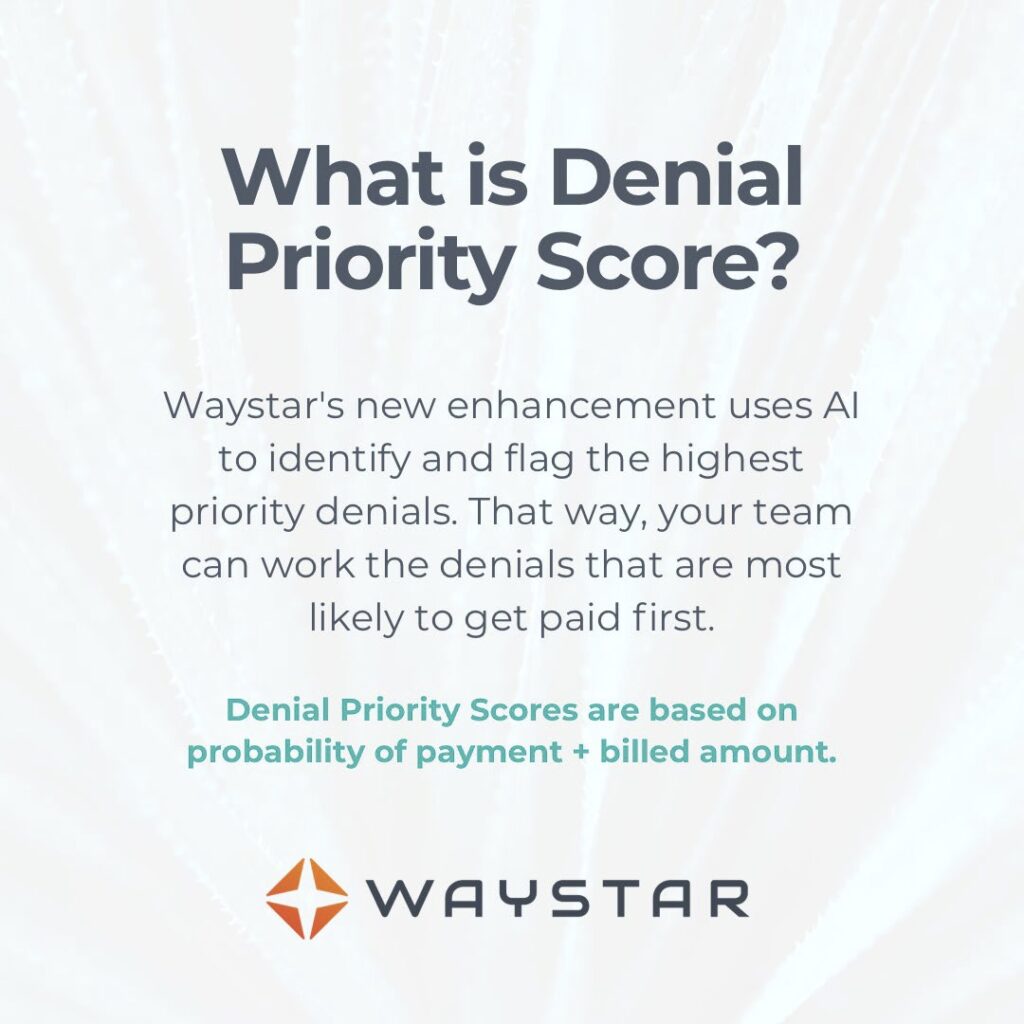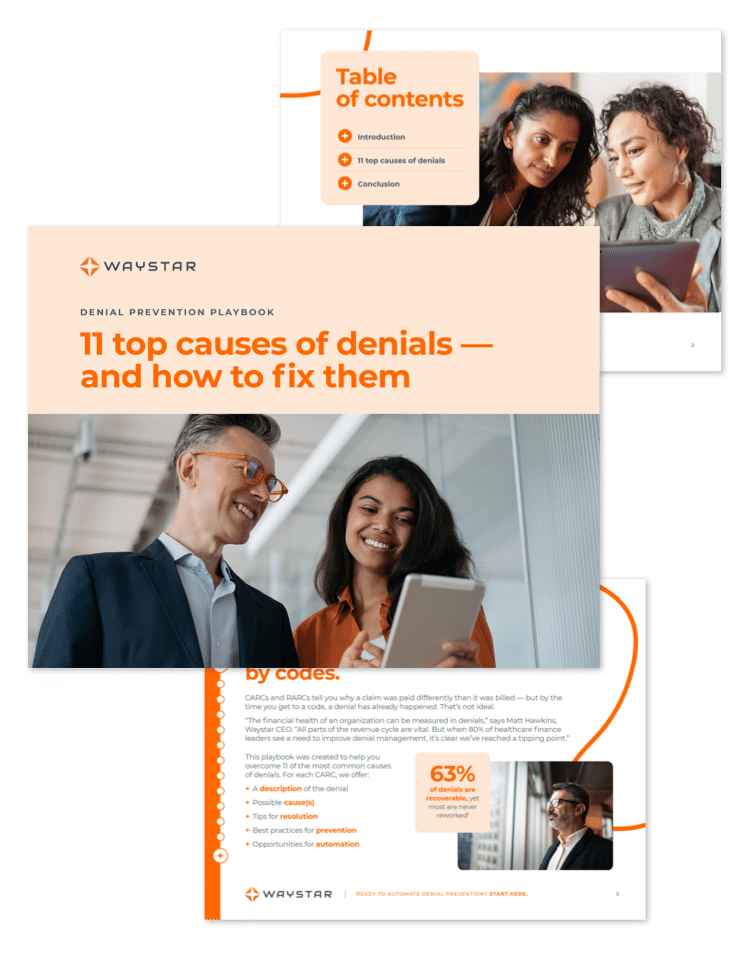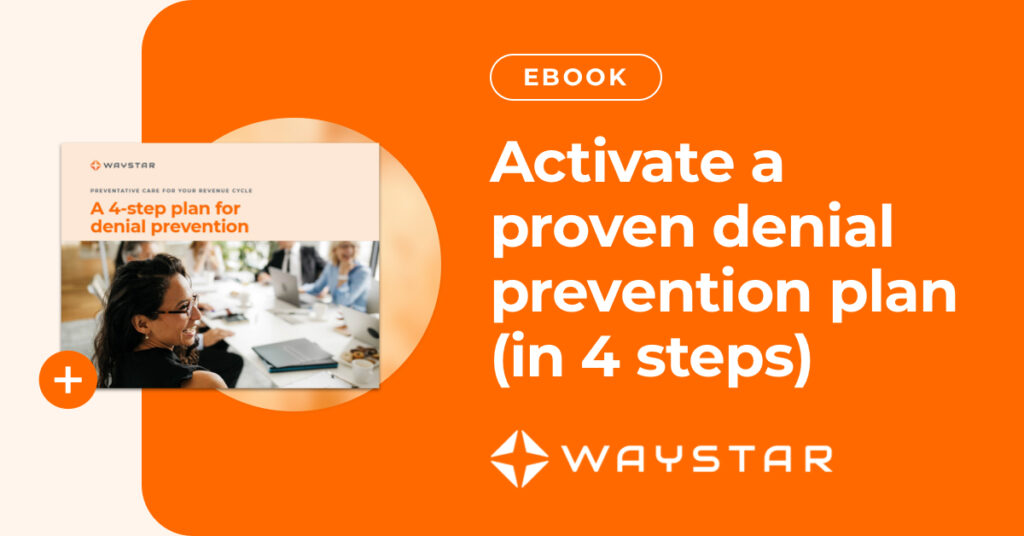Denial management in healthcare RCM is critical. Denials affect everything from revenue flow to efficiency to patient satisfaction. And when research shows eight of 10 healthcare finance leaders say there’s room to improve denial management, properly managing them is a top priority.
“Providers are investing significant time and revenue cycle resources to manage claim denials,” said Matt Hawkins, CEO of Waystar. “Organizations must approach denial management with a holistic strategy that incorporates robust front-end denial prevention. This end-to-end perspective, coupled with purpose-built technology to ease overburdened staff, will result in marked improvements for providers.”
Before you can actively implement denial management in healthcare, you need to understand the moving parts.
What is denial management in healthcare?
A claim denial happens when a healthcare insurance payer refuses to reimburse a provider for services rendered to a patient according to their benefits. Denials can be full or partial, hard or soft (irreversible vs. appealable). There are hundreds of reasons a claim may be denied.
Denial management in healthcare refers to the entire process of finding, reviewing, and resolving claim denials. This strategic process aims to identify the cause of denials and put processes in place to prevent those types of denials from happening in the future. Denial management in healthcare is most effective when skilled teams use AI-driven software to automate the tracking, triage, appeal, and prevention of denials.
Where do I find a denial in healthcare?
Denials can be found within insurance accounts receivable (AR), which is often referred to as “outstanding AR.”
Insurance AR can be further broken down into three categories:
- Rejected (277CA response)
- Claims with no response
- Claims with a response (other than a payment)
Claims with a response — those in category #3 — are your denials. They will be represented:
- By a CARC/RARC on an ERA/EOB
- In a letter from the payer
- In your practice management (PM) system, but only after the payment poster receives the ERA/EOB and posts the denial
Claims that remain unpaid will be available in a work queue within the PM system or, if that’s not available, can be identified in an AR report.
When should I resolve denials in healthcare?
Denials must be resolved before the timely filing limit. Different payers have different limits. Some allow 90 days for an appeal to be filed while others allow up to a year. But you don’t want to wait any longer than necessary.
The best practice is to resolve denials as soon as possible because that money is on the table. Do that in three ways:
- Use efficient processes so denials are touched as few times as possible
- Manage your staffing needs so claims can be worked timely
- Explore and implement processes that prioritize which denials to work first
Which denials in healthcare should I prioritize?
The reality is that most healthcare organizations can’t work every single unpaid claim, even if they want to. You need a system to help you determine which denials to work first, how to assign work, and how to maximize efficiency so you can appeal and recover as many denials as possible.
Start with:
- Claim age
- Dollar amount
Then consider:
- Payer
- Specialty
- Location
- Provider
The right technology can automate this process. Waystar’s Denial Prevention + Recovery software helps identify the denials with the highest probability of successful appeal and flags the highest priority ones for your team to review first. It also intelligently prioritizes workflows and automates paperless, pre-populated appeal forms.
How do I succeed in denial management in healthcare?
It costs an organization much more money to reverse a denial than to prevent one in the first place. Creating a complete denial prevention plan is a big undertaking, but figuring out which denials are most common in your organization is a great first step.
Kickstart denial management in healthcare
1. Create a list of common denials for your organization
Start with the list of CARCs on x12.org.
Common claim denial reasons link back to errors or incomplete information related to:
- Eligibility
- Authorization
- Bundling
- Patient benefits
- Duplicate claims
- Not compatible codes (modifier, CPT, gender, diagnosis)
- Coverage status
- Other responsible payers
- Medical necessity
2. Match each denial type to the team responsible for preventing It
Be careful — some denials have multiple origins.
Teams might include:
- Front desk
- Appointments
- Authorizations
- Coding
- Charge entry
- Billing
3. Categorize denials as preventable or non-preventable
Some denials are absolutely not preventable, no matter what processes you develop.
4. Give ongoing direction
Offer staff direction on what to do with the balance, give feedback to assigned departments on process improvement, and set best practice goals. Feedback not only helps staff to improve their performance, but also to understand their impact on the organization.
As you work to build a denial prevention plan, remember it will take time to develop one that works for your organization. Mistakes will happen, but you will overcome them — and the process you create will improve efficiency as well as your bottom line.
Ready to automate denial management in healthcare with Waystar?
See how we save clients up to 40 minutes per appeal with Denial + Appeal Management.






